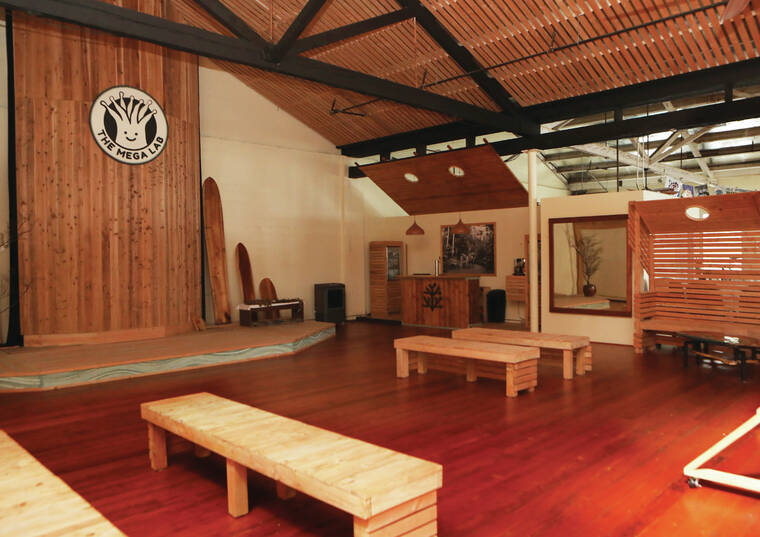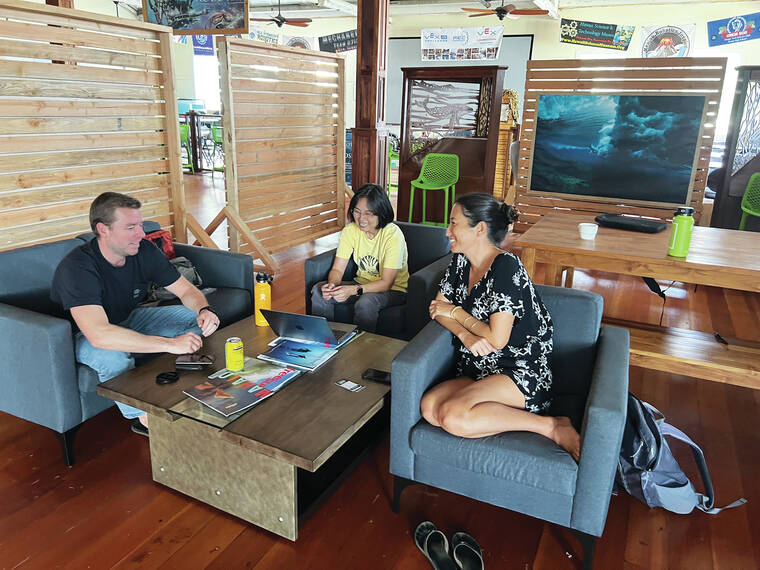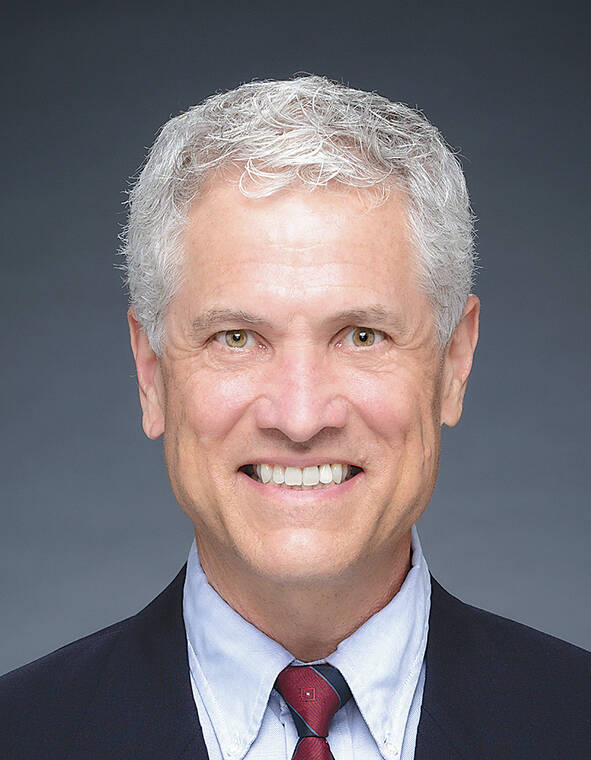A new group of scientists are operating a lab near Hilo Bayfront, favoring surfboards over microscopes when it comes to conducting groundbreaking research.
The Multiscale Environmental Graphical Analysis Lab, or MEGA Lab, is located atop the Mokupapapa Discovery Center in downtown Hilo. The public is encouraged to wander upstairs and check out the group’s work that maps and analyzes coral reefs.
“We look at coral reefs and use 3D maps to create a backbone that integrates all these different data parameters,” said John Burns, MEGA Lab founder and associate professor in marine science and data science at the University of Hawaii at Hilo. “We’re aware science hasn’t always done a great job communicating, and it can be intimidating to people from the outside, so we’re really trying to flip that narrative by being inclusive and creating spaces that are here for the public.”
The lab opened to the public in October and combines research technology with video production, a stage for performances and free community events to inspire visitors.
“We want to leverage our scientific abilities to create opportunities for students to get jobs doing conservation activities that are positive for Hawaii,” said Burns. “We believe that’s the future, and we want to make that the biggest industry in Hawaii — bigger than tourism.”
With more than 80% of the world’s oceans still unexplored by humans, Burns founded the lab during his postdoctoral work to map coral reefs using Structure-from-Motion photogrammetry, a technology used to create three-dimensional structures via two-dimensional images.
He called on several friends and researchers of varying backgrounds to help him with the task.
Haunani Kane of Oahu joined as an assistant professor from the University of Hawaii at Manoa. She works as a navigator and geologist and was an integral part of the Polynesian Voyaging Society’s five-year worldwide Hokule‘a voyage, where she served as the director of sciences.
“The vision has really been to create a space for the community, where they can come and learn about what we’re doing and about the reefs and ocean,” she said. “But in a way where they get to see folks from their community doing that work, so it’s a little more approachable and fun.”
Cliff Kapono is a Hilo native, professional surfer, chemist and an assistant professor at Arizona State University. He specializes in molecular bioscience and human-environment connections.
“You don’t have to give up what you love to climb this ladder to getting to professorship,” said Kapono on joining the lab. “We wanted to show people publicly, not behind some closed doors, what scientists look like. It’s not all lab coats and calculators, it’s normal people, and this is how we operate.”
There’s also Atsuko Fukunaga of Japan, a quantitative ecologist with NOAA and ASU who handles a variety of data and research, along with a growing team of ASU PhD students that completed their Master’s degree at UH-Hilo, including Crispin Nakoa of Hilo, Kailey Pascoe of Kaneohe and Kainalu Steward of Maui.
“We’re using modern technology to study reefs because we were stuck in traditional ways,” said Pascoe. “We also use cameras, storytelling and videos to communicate that science to our community.”
Recently, the MEGA Lab mapped the reef at Kurukuru Mailani in Fiji, where surfers and divers operated 2D and 3D camera equipment to capture the reefs.
The models can be viewed at the lab via augmented reality technology, where visitors download an app that provides 3D views of the reef on their phones.
The lab team is further developing the technology so it can be used throughout the museum in the future.
“We’re adding more to the app so when you come in, you can point your phone at almost anything, and it will give you some information about it or show you a video,” said Pascoe. “It will be more interactive.”
The MEGA Lab’s reef maps allow for interpreting both chemical and geophysical changes to reefs, which can support healthy ecosystems.
“For the first time ever, we are able to really see the reef and how it changes over time while measuring those changes,” said Burns. “If you can’t measure the reefs three-dimensionally, you have no sense of why it’s so important for the resources we depend on, such as food and medicine.”
While the research stresses the importance of coral reef environments, the lab places emphasis on the Hilo community.
“There’s so many incredibly diverse, impactful and meaningful people here in Hilo, we shouldn’t be farming them out to other places or having to import people from far away to do the work we do here,” said Kapono. “The ecology that exists on this island is a tremendous resource that doesn’t exist anywhere else in the world, and the people, I think, are the only thing that can match it.”
Email Grant Phillips at gphillips@hawaiitribune-herald.com.









